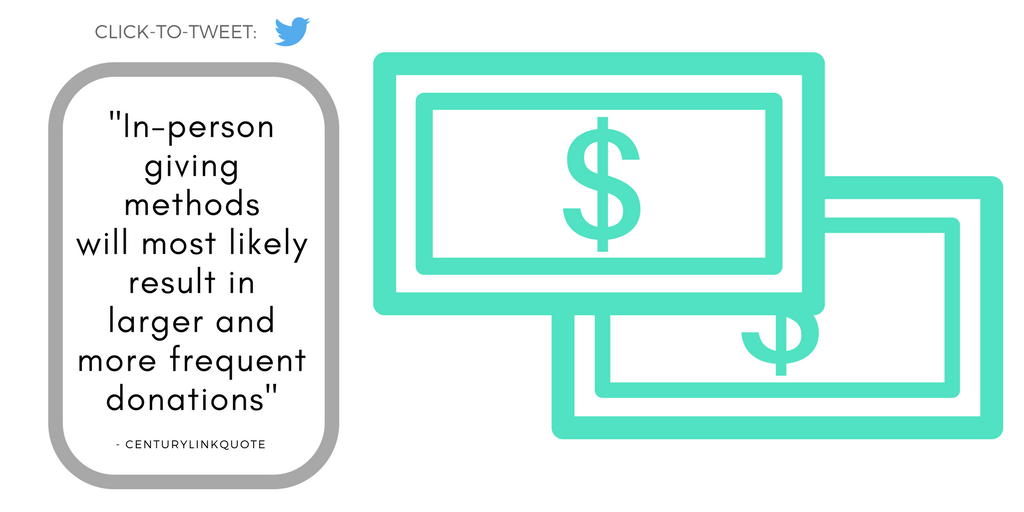When you don’t need high-speed Internet access for work or research, social media is a great way to interact with friends, while taking some time to relax. In fact, social media is an integral part of many people’s lives, but as its popularity has increased, so have its potential dangers. An average of 10% of social media users have been a victim of a cyber-attack through social media, and more than 600,000 Facebook accounts alone are compromised on a daily basis. Knowing the potential risks and security best practices can help you stay safer and avoid scams. Start implementing these five tips today.
1. Keep Your Profiles Private
Scam artists love social media because it gives them easy access to large networks of potential targets. They can use a seemingly innocuous beach photo or vacation post to learn more about you and your purchases or location — the exact type of information that makes it easier to crack passwords or access other accounts. By keeping your profiles private and allowing only your friends to see your updates, you limit the information that malicious third parties can access.
2. Be Careful with What You Post
Even if your profile is private, there’s a chance your posts could be leaked or discovered by a hacker, so don’t post anything that reveals personal information about yourself. Here are a few examples of what should be off-limits for social media posts:
- Home address
- Phone number
- Bank name or information
- Photos of ID or passport
Turn off location services so you don’t reveal your posting location, and never announce when you’re home alone or leaving your home unattended.
3. Ignore Gimmicks
The most common scams on Facebook are online surveys and fake offers, though these scams can be found on other social media platforms, too. Avoid offers for free merchandise or online surveys in exchange for gift cards or prizes. If it sounds like an offer is too good to be true — “Share this post and win $1,000!” or “You just won a free iPad!” — it likely is. By clicking on these posts, you may accidentally download malware or share personal information with a hacker.
4. Use Strong Passwords
You’ve likely seen or heard of the many people who have had their accounts hacked. Hackers and malicious programs can use hacked profiles to post spam, inappropriate comments, or links to surveys and giveaways — all without the profile owner realizing it. And using a weak password makes it much easier for a cybercriminal to gain access to your account this way.
While there is no such thing as an entirely hack-proof password, you can create strong, hard-to-crack passwords. Use a long combination of various characters, including numbers and symbols, and avoid using words or common phrases. Three or four times a year, update your passwords and create different ones for each account.
5. Check Out Your Profile on a Regular Basis
With so many social media platforms available, many people create profiles on multiple sites and then abandon them shortly thereafter. But if you forget about a profile, you may never know if it was hacked. Regardless of how frequently you use a platform, review your profile at least weekly for spam or suspicious activity.
If you think your account has been compromised, change your password immediately and then contact the site’s support portal to report the issue. If you no longer want to use a platform, delete the account rather than leave it unattended.
Social media is a fun way to stay connected with friends and family online. By following these five safety tips, you can feel more confident in the security of your profile and personal information.
Studies show that Americans are among the most charitable people in the world. Americans especially tend to give during the holiday season, a time when US charities receive an average of 41% of their annual contributions, according to Charity Navigator.
Online giving has increased by 7.9% year over year, which is why it’s strange to see a trend that suggests the opposite—the most charitable cities in America are located in some of the least internet-connected states.
How did we arrive at this conclusion? In comparing The Barna Group’s “50 Most Generous Cities in America”, and the “Computer and Internet Use in the United States: 2015” data from the US Census Bureau, we found that the top ten most generous cities were located in states that ranked most consistently in the bottom 20% in terms of internet connectivity.
It’s important to note that The Barna Group data is based on DMA’s (Designated Market Areas) rather than exact cities, so some data points include multiple cities. The data point we used from the US Census Bureau was titled, “Percentage of Households with Broadband Internet Subscription by State,” where, according to the census site, a broadband subscription refers to “households who said ‘Yes’ to one or more of the following types of subscriptions: DSL, cable, fiber optic, mobile broadband, satellite or fixed wireless.”
Let’s walk through the top ten most-generous cities and where they rank in terms of internet connectivity.
The Most Charitable Cities
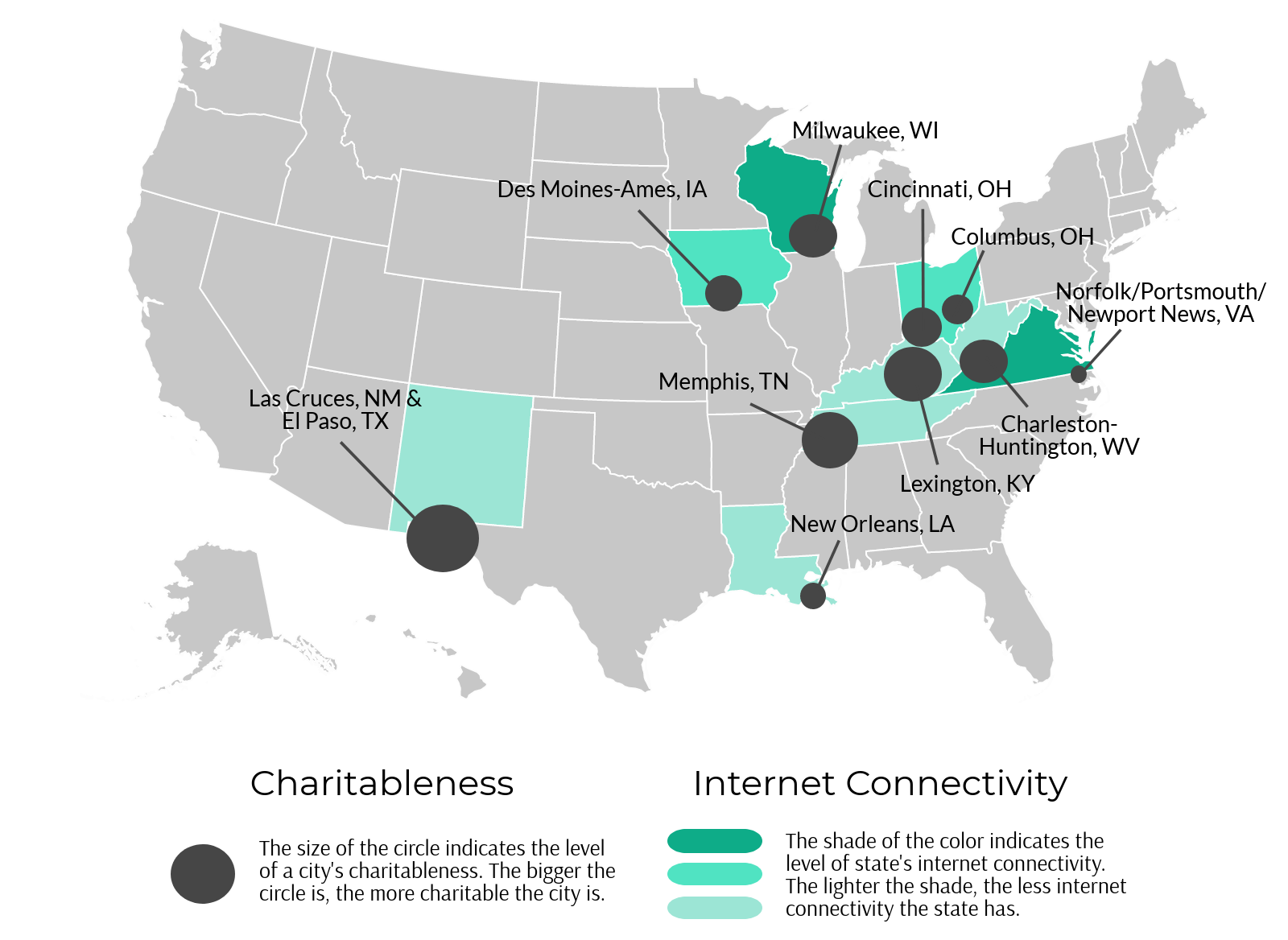
Ranking of the Most Charitable Cities
- El Paso, Texas / Las Cruces, New Mexico
El Paso and Las Cruces took first place for being the most generous cities in America. However, Texas ranked in the bottom 50% and New Mexico ranked in the bottom 20% in terms of internet connectivity.
- Lexington, Kentucky
Lexington was ranked the second-most-charitable city in America, while Kentucky ranked in the bottom 20% for internet connectivity. This puts Kentucky’s internet connectivity on a drastically opposite end of the spectrum from Lexington’s charitableness.
- Memphis, Tennessee
Memphis is the third-most-giving city, while Tennessee ranks in the bottom 20% for internet connectivity.
- Charleston-Huntington, West Virginia
Charleston and Huntington come in at fourth place for most charitable. However, they rank in the bottom 20% for internet connectivity.
- Milwaukee, Wisconsin
Milwaukee is the outlier of the group—it’s the fifth-most-giving city, but it also ranks in the top 25% in terms of internet connectivity.
- Cincinnati, Ohio
Cincinnati rolled in as the sixth-most-giving city while Ohio ranked in the bottom 50% in terms of internet connectivity.
- Des Moines-Ames, Iowa
Iowa’s internet connectivity is in the bottom 50%, but Des Moines and Ames are the seventh-most-charitable cities in the nation.
- Columbus, Ohio
Columbus is the eighth-most-giving city, but Ohio is in the bottom 50% in terms of internet connectivity.
- New Orleans, Louisiana
New Orleans residents are ranked the ninth most charitable citizens in the US. Meanwhile, Louisiana is in the bottom 20% in terms of internet connectivity.
- Norfolk/Portsmouth/Newport News, Virginia
Virginia ranked in the top 25% for internet connectivity and Norfolk/Portsmouth/Newport News took tenth place in terms of most charitable cities.
Is Charity More Affordable Than the Internet?
What factors could cause such a disparity between charitableness and internet connectivity?
When we looked at the annual household income of the states with the top five most-charitable cities, we found that all but one of the top five cities are in the bottom 20% of national annual household income.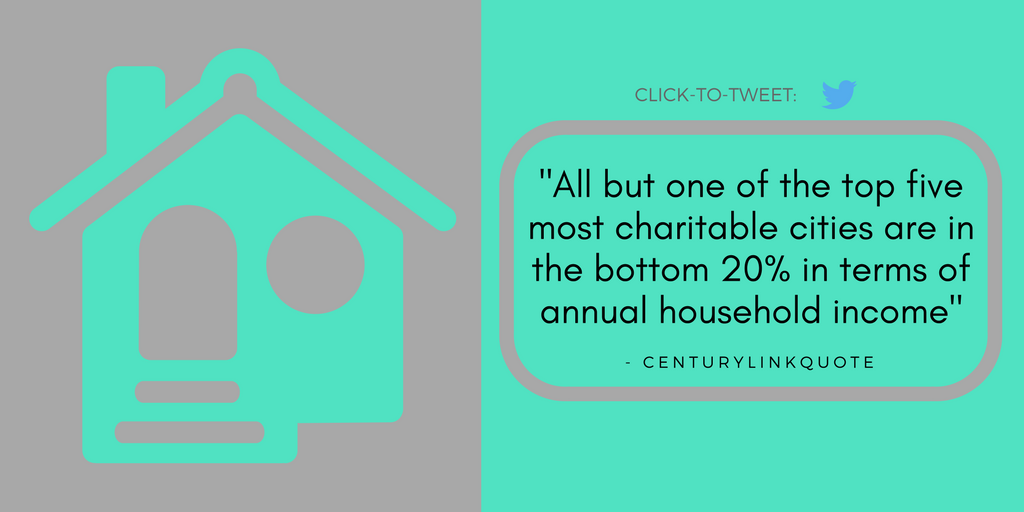
This information suggests that the wealthiest aren’t the most charitable. It also suggests that charity is simply more affordable than the internet. The Barna Group study asked people to self-report on their donations, so donations could have been as small as one dollar per year. This amount is obviously more affordable than a yearly internet subscription, where the average internet subscription cost in the US is $35 per month ($420 per year) for 4 to 6 Mbps.
Internet price isn’t the only consideration either. Akamai’s “Q1 2017 State of the Internet / Connectivity” report shows that four of the top ten most charitable cities were located in states that ranked in the bottom 20% in terms of fastest internet speeds per state. The remaining cities were in states that ranked in the bottom 50% as well, except for Virginia, which ranked eighth in terms of internet speed.
Even if people in these states wanted better internet connectivity, they’d have to pay up to $70 per month for internet faster than 6 Mbps. That’s $840 per year for a “normal” internet speed!
What Is the Psychology of Donating?
Given the lack of internet connectivity, there’s a greater chance that the most charitable cities donate through traditional in-person methods instead of online. These in-person methods could result in larger and more frequent donations—after all, studies also show that giving is fundamentally a social act and that seeing others give makes us more inclined to give as well.
It’s also probable that cities with less internet access spend more time with their communities, which could mean they give to causes they have first-hand experience with. Charity Navigator indicated that 65% of their donors reported that “being familiar with a charity” was highly important in deciding whether or not to donate to it.
Are Church-Goers More Charitable?
A large portion of adults in the top five charitable cities gave to churches. Charity Navigator found that 87% of adults in El Paso and Las Cruces gave to churches and 84% of adults in Lexington gave to churches. The remaining three of the top five gave anywhere from 64% to 73%.
Connectedtogive.org found that the more religious a person is, the more likely they are to give in general, not just to religious charities. This tallies with data from Pew research on how religious each state is, as all but one of the top ten charitable cities were located in states that rank in the top 18% in terms of religiosity.
As discussed above, people with less internet access most likely spend more time in their communities, including church communities, which means they’re more inclined to give to their churches—and to give more in general. Additionally, many churches encourage donating, so donating could become a monthly or annual routine for religious individuals.
In any case, charity donations are money well spent. During this holiday season, it’s nice to remember that giving is still alive and well!
Having high-speed Internet is no longer a luxury, it’s a way of life and when you get Internet at a great price, like you can with a CenturyLink bundles, life is good. However, this new way of life isn’t exactly care free. If you have ever clicked on a link or advertisement to instead have a download begin or have downloaded a file from an unknown website or email address, you may have encountered malware. These are two frequent methods hackers use to infect computers with viruses and malware.
Whether you receive files in emails or download media, it’s important to know the potential risks associated with unfamiliar data so you can avoid compromising your computer’s health and your identity.
How Malware Infects a Computer
Malware, or malicious software, includes spyware, viruses, worms, keyloggers, and other types of code that infect computers. Viruses are a common type of malware that can copy itself, and hackers are continually developing more sophisticated viruses that can appear as safe files or websites. Viruses can be disguised as Word documents, image and video files, trustworthy links, and email attachments. You may think you’re viewing an image or downloading a movie when in reality you’re infecting your computer with malware.
Once infected, your computer may slow down or delete files, and you may notice more spam email and pop-up advertisements. Hackers may also be able to access your personal and financial information to steal your identity. Unfortunately, many people do not realize when their computer is infected because malware can run undetected.
Best Ways to Avoid Malware Threats
Most viruses are delivered through attachments, so the best way to avoid this common threat is to practice caution when you receive or consider downloading a file. Don’t download anything from an unknown email address or website or anything that has a suspicious attachment name.
If you’re visiting a new website, run a search through Ripoff Report to see if anyone has reported suspicious activity. If the business doesn’t look legitimate, don’t click on any files or links.
Top Software to Help Prevent Threats
Unfortunately, all the caution in the world can’t completely prevent viruses and malware, so you’ll still want to use an antivirus software program to stay safe, whether you have a Mac or PC. There are dozens of antivirus software options that are easy to use and help prevent identity theft or a virus destroying your computer, but three stand out from the rest.
Webroot SecureAnywhere AntiVirus
Available for PCs and Macs, Webroot SecureAnywhere Antivirus allows you to secure up to three computers with its antivirus security and identity theft protection that guards your personal and financial information. Webroot also offers Internet Security Plus and Internet Security Complete, which can secure more devices and provide more storage.
McAfee AntiVirus Plus
McAfee Antivirus Plus provides all the essentials you need to guard against viruses and online threats. The software helps you avoid risky websites, prevents dangerous downloads, permanently deletes sensitive digital files, and protects both your computer and mobile devices.
With antivirus software installed, you can feel more confident in your Internet browsing and ability to avoid viruses and malware.
Did you know that four in ten Americans tune in to podcasts these days? The popularity of podcasts has steadily risen between 10%–20% year over year. Steady growth is a good sign that this form of media will be sticking around for the long haul.
With Halloween just around the corner, what better way to bring in the holiday than listening to some creepy podcasts? Most of them are available online or on a mobile device, so all you need is an internet connection or a 4G network to enjoy them.
We used Google Search and Google Trends to collect and analyze data around each state’s favorite creepy podcast in 2017. The results confirmed some beliefs we already had but also brought new ones to light.
The Obsession with True Crime Podcasts
Our data shows that 86.5% of the nation is more interested in true crime podcasts than fictional podcasts. But why? Is the subject more relatable, and therefore more real?
“The public is drawn to true crime because it triggers the most basic and powerful emotion in all of us—fear,” says Scott Bon, Criminology Professor at Drew University. True crime means a crime that could happen to any of us, and that alone is enough to increase the fear factor in podcast listeners.
Top Podcasts
Serial is the mother of all true crime podcasts. It was the first of its kind and it has spawned multiple spin-offs. It first debuted in fall of 2014, and our data shows that 42.3% of the country still prefers it over newer creepy podcasts.
Serial was developed by NPR’s This American Life and breathed life back into true crime stories. It single-handedly drew enough attention to get a retrial for the main suspect, Adnan Syed, in the original crime. In turn, this news spiked the podcast’s popularity in the summer of 2016.
There were five states that ranked only for Serial in our Google Trends search data. For all other podcasts, there wasn’t enough search data related to these five states for Google Trends to show any results:
- North Dakota
- South Dakota
- Wyoming
- West Virginia
- Delaware
It’s probably safe to say that these five states are also the least interested in listening to podcasts overall. But perhaps Serial’s ability to influence a real-life crime case and become part of the story, rather than just telling the story, has made its popularity so long-lasting.
There was one podcast that scored second place in over fifteen states: Last Podcast on the Left. The website writes, “from demons and slashers to cults and serial killers, The Last Podcast is guaranteed to satisfy your bloodlust.” Last Podcast covers both true crime and fiction stories, always with a sprinkle of dark humor.
States Most Interested in Podcasts
These states (and district) consistently ranked highly in Google Trends searches:
- California
- Minnesota
- District of Columbia
- Georgia
The data suggests that these areas have the most people frequently tuning in to podcasts.
States Whose Number-One Podcast Took Place on Home Turf
Not surprisingly, states favor podcasts that take place on their home turf:
- Georgia. The Fall Line dives into missing persons cases from Georgia. The authors of the podcast write, “our goal is to amplify the missing persons cases of marginalized communities in the Southeast.”
- Rhode Island. Crime Town focuses on different US cities every season, but it ranks number one in Rhode Island because—guess what—the first season takes place there.
- Minnesota. 74 Seconds is a podcast by NPR that examines the case of Philando Castile, who was shot and killed by a police officer at a Twin Cities traffic stop.
- Hawaii. Offshore looks at two murders that happened thirty years apart in Hawaii. It highlights the racial and political tension that still exists in Hawaii today.
- Massachusetts. Stranglers covers the true crime stories of victims of the Boston Strangler.
- Ohio. Accused looks at a potentially wrongly convicted man charged with murdering a young woman in Cincinnati in 1978.
- Alabama. S-Town studies the life of an Alabama resident who claims there has been a murder cover-up in his small hometown.
Podcasts Based on Wrongful Convictions
Among the true crime podcasts on our list, four of them focus specifically on wrongful convictions. These podcasts include the following:
- Accused
- Serial
- Truth and Justice with Bob Ruff
- Undisclosed
This puts exactly 50% of “creepy podcast” listeners tuning in most frequently to podcasts focused on wrongful convictions. Could this allude to a deeper issue in our country? Perhaps this statistic suggests society has a stronger interest in following the actions of the government and how the law impacts people’s lives.
Our Methodology
Wondering how we determined the top creepy podcasts by state in 2017? First, we defined “creepy” as consistently dealing with the topic of death or tragic events. We compiled a list of the most-searched-for creepy podcasts on Google and we came up with seventy-six different podcasts. Of those seventy-six, thirty-seven of them had sufficient Google Trends data. We analyzed those thirty-seven podcasts to determine which was most popular by state. Click here to view the list of creepy podcasts by state PDF.
Between school and social interactions, kids are using the Internet at younger ages than ever. But news stories about cyberbullying, chat room deceptions, adult websites, and online scams can worry parents. What could their child find online? Will they become a victim of fraud or mean-spirited tricks?
While it’s nearly impossible to watch over your children’s shoulders every time they use the Internet, you also want to make sure they’re safe on the Internet. One way to monitor your kid’s online usage is by using parental controls.
Parental Control Features
Parental controls are programs — either software, browser add-ons, or apps — that allow you to adjust the settings on a computer, laptop, gaming system, tablet, or phone to filter and block age-inappropriate content and monitor your child’s searches and usage. Some systems also allow you to limit the time spent online, prevent personal information sharing, and record website visits.
Depending on your budget, monitoring goals, and child’s age, the most basic option is to use a kid-safe browser or enable a content filter on your web browser, like Google’s safe search setting. But while these measures will suffice for young children, teenagers are more likely to find a way around these settings, so you may want to install a more advanced system.
Popular Parental Controls
There are multiple parental control programs available, but five, in particular, are highly rated due to their extensive features and abilities.
- Net Nanny 7 is one of the most popular parental controls thanks to its advanced reporting and top-rated content filtering. Using this app allows you to hide profanity, block pornography, receive real-time alerts, and create multiple user profiles to tailor protection to each child’s needs and age.
- What sets Qustodio Parental Control apart from the crowd is its ability to track online activity on computers, smartphones, and Kindle devices. While many parental controls are limited to computers, you can maintain comprehensive monitoring on all of your kids’ devices to keep track of their social media and searches.
- Norton is well-known for antivirus software, so it’s no surprise it offers a popular parental control, Norton Family Premier. With flexible content filtering, you can choose from dozens of categories to block — from gambling to computer hacking — and track video viewing and searches.
- PhoneSherriff, a mobile-specific app that functions best on Android devices, offers similar benefits to others on this list — usage monitoring and content blocking included. It also has a unique feature that allows you to set geographic parameters for your child’s device and receive a notification when those boundaries are crossed.
- Designed just for iOS devices, Netsanity lets you take control over your kid’s Apple phones and tablets. The software can limit viewable apps and enforce time limits on Internet browsing. You can even remotely disable your child’s Wi-Fi connection if you’re concerned about what they’re getting into.
Whichever parental control you choose, these programs can help you keep your child safe online. Remember, the more you know about the Internet and online safety, the better you can protect your kids. Check out our Internet Safety Guide and other resources for more safety tips.
In 2014, 17.6 million people in the U.S. had their identities stolen, with total financial losses reaching $15.4 billion. Identity theft is a very real — and frightening — possibility. Worse still, you don’t always know your identity was compromised until you see fraudulent activity. Read on to learn more about identity theft, as well as how to mitigate your risk online.
How Identity Theft Happens
Identity theft, also known as identity fraud, refers to the act of using another person’s identity to impersonate them. Two of the most common end results of identity theft are financial fraud and criminal activities. A person stealing your identity may attempt to access your bank accounts, take out a line of credit in your name, or commit a crime — all without putting their own identity at risk.
A thief can steal your identity via dozens of different access points, but a few methods are more common than others:
Copying Credit or Debit Card Numbers
If you’ve ever left behind an ATM receipt or lost your card, someone can steal your identity. Once a thief has your name and account number, they have all they need to make purchases at most shops and online stores.
Stealing Paperwork or Account Statements
From public records to credit card applications, anywhere you’ve provided personal information — your name, address, or Social Security number — can be a target for a thief.
Online Phishing
Phishing occurs when a thief poses as a legitimate website or business to access your contact or credit card information. This method has increased in popularity as more people rely on the Internet for banking, communication, and other transactions.
Remember, thieves need only a few bits of your personal information to piece together the rest of your identity and use it for illegal practices.
Preventing Identity Theft
Implementing a few safety practices and security measures can significantly reduce your chances of identity fraud.
- Shred all documents that contain personal information, including account statements, credit card offers, receipts, and government letters. Never dispose of personal papers in public trashcans.
- Don’t write down account passwords on paper. You should also have unique, complex passwords for each of your accounts. If you have trouble keeping track of your passwords, use a secure password manager, such as LastPass, which uses the industry’s best encryption methods to keep your information safe.
- Avoid sharing your Social Security number. Submit it on only those websites you are certain are legitimate and secure, and don’t write it on paperwork unless it is necessary, as it might be for a loan application.
- Install antivirus software on your computer. If your computer is infected with spyware, hackers can steal information stored on your computer, including bank accounts, login credentials, and credit card numbers, but a good antivirus program can help put a stop to that sort of violation.
- Refrain from using public Wi-Fi. It’s less secure, and hackers may be able to access any information you send on those networks. If you must use a wireless hotspot, use only websites that are fully encrypted, and try to avoid inputting personal or financial information.
There’s no guarantee that your identity is 100% protected online, but knowing what to avoid and taking precautions with your personal information helps. The more you know what information can be accessed through the Internet, the better choices you can make when browsing online.
CenturyLink offers high-speed Internet plans plus opportunities to bundle home services and Internet for extra savings. Take a look around the site to find out more.
Computer hacking may seem like a plot line from a mystery novel, but unfortunately it’s very real in today’s world. When we use our computers to surf online, we’re immediately exposed to potential scams, viruses, and hacking, which can obtain our personal information and steal our identity.
One way to help prevent the possibility of an attack is with a firewall. A firewall can be used to prevent malicious attacks and unauthorized access to your network through the Internet. Read on to learn more about how firewalls work and how you can use them to help secure your networks.
Firewall Basics
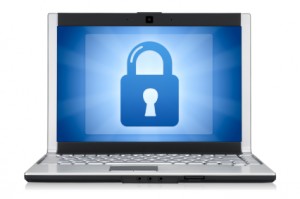 Firewalls are security measures that come in two forms: software and hardware. A software firewall is a computer program that monitors outgoing and incoming Internet traffic on your internal network, whereas a hardware firewall is a device that monitors traffic between your network and the Internet at large. Both types can be used by individuals and businesses, though the setups will look a bit different. Extensive hardware firewalls, for example, make more sense for businesses where multiple computers share the same Internet connection, while most small home networks can just use a router as a basic hardware firewall.
Firewalls are security measures that come in two forms: software and hardware. A software firewall is a computer program that monitors outgoing and incoming Internet traffic on your internal network, whereas a hardware firewall is a device that monitors traffic between your network and the Internet at large. Both types can be used by individuals and businesses, though the setups will look a bit different. Extensive hardware firewalls, for example, make more sense for businesses where multiple computers share the same Internet connection, while most small home networks can just use a router as a basic hardware firewall.
Both types of firewall work to keep network users safe from a network breach by keeping unauthorized users and programs at bay. When you connect a computer to the Internet, that computer is able to send and receive data across a network. Without a firewall, some network access points may be exposed to experienced hackers who know how to probe networks for weak spots. If a hacker can break onto a network, they may be able to access your computer and any information stored therein, such as email passwords, addresses, and credit card information. A firewall acts as a perimeter guard, monitoring the network traffic that runs back and forth across your connection, effectively blocking hackers or malicious programs before they can enter.
Firewall Security Features
A firewall is like a filter between your computer and the Internet. It allows you to decide what incoming and outgoing information is allowed to pass freely. Everything else is blocked and screened out, from malicious users to worms trying to access your network through the Internet. Depending on the firewall program you have, you may be able to set up additional security parameters, including the following:
- Safety Reminders: If you attempt to access or send information on an unsecured or unencrypted website — knowingly or unknowingly — your firewall can be set to alert you.
- Access Allowances: Prevent third parties from accessing sensitive or personal information while you’re browsing online.
- Cookie Blocking: Cookies — the small text files stored on your computer by a server — can be stored on your computer and cause privacy concerns. Some firewalls allow you to regulate whether your computer allows cookies.
- Threat Notifications: Receive notifications whenever the firewall blocks a threat, including information on the type and severity of the hazard.
Many people assume a hacker wouldn’t be interested in breaking into someone’s home computer, but it happens every day. Hackers don’t always manually look for computers to attack. Sometimes they use programs to scan random IP addresses and attack any vulnerable computers they locate. Anyone who regularly uses the Internet can benefit from a firewall. Consider it as a form of identity theft insurance — while a firewall can’t guarantee you won’t be attacked, it can help mitigate the risk.
Finding a Firewall Program
Many of the same companies that produce computers, routers, and Internet security programs offer firewalls, including Cisco, Dell, Norton, and NETGEAR. Along with those available for purchase, there are many free firewall programs you can download on your computer.
If you’re looking for high-speed Internet service or are not satisfied with your current provider, take a moment to checkout the Internet home service bundles available through CenturyLink. With proper security measures installed on your computer, you can feel safer browsing and shopping online, avoid risky websites, and have a better understanding of the traffic attempting to go in and out of your network.
Since its founding over 85 years ago, CenturyLink has been committed to corporate social responsibility (CSR). The company believes positively impacting society and the environment isn’t just smart — it’s also good business. It leaves the world better than it was; leads to conscientious economic developments; and improves quality of life for employees, customers, and society as a whole.
CenturyLink’s current CSR efforts emphasize three areas: philanthropy, sustainability, and collaboration. The three often work in concert, as the company understands that long-term, positive results occur through a multi-pronged approach rather than a singular initiative. What follows is a closer look at a few of CenturyLink’s recent CSR initiatives, as well as the impact they’ve had on local and global communities.
Commitment to Philanthropy
CenturyLink believes that permanent change arises from within communities themselves. As such, the company has invested in several outreach efforts that offer assistance to area communities and catalyze transformation from the inside out. Here are a few of those efforts.

Community Food Drives
The Backpack Buddies Food Drive, an annual and national online food drive, takes place every summer. In the 2016 drive, CenturyLink supported more than 140 food banks in U.S. communities. Through combined efforts from area support networks and the CenturyLink Clarke M. Williams Foundation, the company helped raise more than $1.6 million during the food drive — an amount that translates to nearly 10 million nutritious meals for at-risk students and other community groups.
Grants and Funding
CenturyLink backs several grants, including the Clarke M. Williams Foundation’s Teachers and Technology Grant. The grant helps recognize teachers who strive to embrace new technology in their classrooms. Thus far, hundreds of these grants have been awarded to outstanding teachers nationwide.
Another CenturyLink grant, The Matching Time Grant, supports employees’ volunteer efforts in their local communities. If an employee volunteers 40 hours or more with an eligible nonprofit organization, they can earn a $500 grant for that nonprofit through their efforts. To date, CenturyLink has awarded nearly $400,000 in these grants to match employee efforts.
CenturyLink and United Way
CenturyLink often partners with local organizations for greater positive impact. In 2014, the company entered a partnership with Mile High United Way to fund their 2-1-1 Help Center, a service that connects people in the community with support and resources.
CenturyLink continued its financial support in 2015 through a joint initiative with Denver Broncos player Emmanuel Sanders. For every 211 yards Sanders gained during games, CenturyLink donated $1,000. Going one step further, the company tacked on another $2,110 every time Sanders went over 211 yards per game. The partnership was hugely successful, raising both money and awareness about the program.
Volunteering
Developing strong neighborhoods has always been a part of CenturyLink’s mission, which explains the company’s consistent support for employees to get involved with their local communities. This volunteer-oriented attitude was emphasized in CenturyLink’s 85th anniversary last year — employees celebrated the occasion through completing 85 community volunteer projects nationwide, ranging from building homes with Habitat for Humanity to walking dogs to help local shelters.
Education Initiatives
CenturyLink’s affinity for charitable actions doesn’t stop with donations and volunteerism — it also includes educational efforts. In 2014, CenturyLink launched an Internet security blog to help consumers combat increasing cybersecurity threats. The company also works with nonprofit partners to provide basic computer and Internet training sessions to help community residents access healthcare, employment, and other services.
Commitment to Sustainability
CenturyLink’s sustainability initiatives seek to improve stewardship over natural and technological resources, and to develop innovative solutions to emerging environmental challenges. And while external influences like government regulations and growing consumer demand play a role in CenturyLink’s commitment to sustainability, they aren’t primary drivers. CenturyLink has always pursued socially and environmentally conscious avenues to produce a better quality of life. Here are a few ways the company has invested in sustainability.
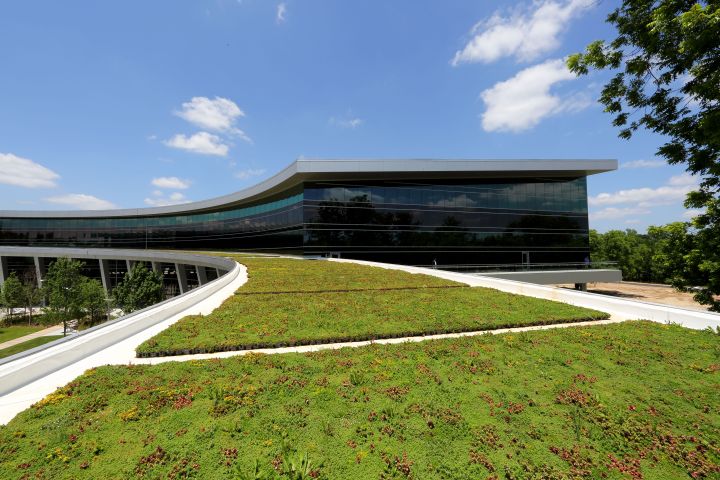
Greener Workspaces
The CenturyLink Technology Center of Excellence is a revolutionary, tech-savvy work hub with extensive networking infrastructures and plenty of open, collaborative office space. The building echoes the company’s commitment to other eco-friendly solutions; the building’s sustainable design promotes high efficiency while simultaneously creating an indoor ambiance conducive to productivity and teamwork.
The center also features a green roof that grows over 20 types of vegetation throughout the year, and the carpet and furniture are completely recyclable. Glass elements in the building have electrochromic glazing, which uses nanotechnology and machine learning to automatically adjust tint to environmental conditions and user preferences.
Lower Data Center Energy Reliance
CenturyLink’s promise to sustainability continues with the U.S. Department of Energy’s Better Buildings Challenge. The initiative focuses on creating energy efficient solutions and accelerating corporate and government investments in them. CenturyLink’s part in the program shoots for a 25% decrease in a portion of its U.S. data center load energy consumption by 2023.
Waste Management and Emission Reduction
Safe and secure recycling reigns at CenturyLink. Over 8.5 million pounds of electronic and telecommunications equipment were diverted from landfills and recycled in 2015. Waste management efforts don’t end there, though — the company recycles paper, too, after securely shredding all important documentation. In the last year alone, CenturyLink sustainably handled millions of pounds of paper, offsetting the destruction of almost 30,000 trees.
CenturyLink also lessens its environmental impact through smart procurement programs. These include EPA Smartway, a program that rewards partners who reduce carbon emissions in their transportation processes; the Telecommunications Energy Efficiency Ratio (TEER), a metric that measures network energy consumption to ensure greater efficiency; and the Set-Top Box Energy Conservation, which promotes greener, more affordable TV boxes.
Renewable Energy Efforts
CenturyLink’s alternative energy projects have grown substantially over the years. Recently, for example, the company installed Bloom Energy fuel cells at a California data center. The cells produce over 4 million kilowatt-hours of clean electricity each year. CenturyLink also has 30 grid-less solar sites, which can generate thousands of watts of power.
Another of the company’s newest alternative energy initiatives occurred just last year in partnership with a Kansas City power utility: the pair installed multiple Level 2 ChargePoint car-charging stations at one of CenturyLink’s Kansas sites. These powerful stations can provide charging power to more than five electric cars at once.
Commitment to Collaboration

CenturyLink’s commitment to collaboration, inside and outside the company, complements its devotion to charity and sustainability. Through collaborative partnerships, CenturyLink solves problems faster and engages employees, suppliers, customers, and other businesses in sustainability efforts. This open approach sets CenturyLink apart from competitors; few other companies believe so strongly that sharing ideas, information, and discoveries can benefit all parties. Below are a few of CenturyLink’s most prominent collaborative efforts.
Telecommunication Industry Collaborations
CenturyLink works in tandem with other telecommunications companies, through the Alliance for Telecommunication Industry Solutions (ATIS), to research and develop more eco-friendly equipment and devices. The company also participates in the ATIS Exploratory Green Group, sharing and developing greener management practices across the industry.
Carbon Disclosure Reports
CenturyLink upholds transparent communication with customers, shareholders, and employees about its environmental impact. As part of that commitment, the company submits a carbon report to the Carbon Disclosure Project every year. The goal of the report is to provide data to decision makers — including business partners and corporate management — to inspire actionable dialogue about climate change.
Environmental Sustainability Council and Employee Initiatives
Nicknamed “The Green Team,” CenturyLink’s Environmental Sustainability Council identifies and prioritizes green initiatives company-wide. A few ongoing efforts include electronic recycling programs, energy conservation, and freight emission reduction. Employees can also suggest new green projects, as CenturyLink has an internal “Going Green” portal for idea submission.
In addition to working on projects that address sustainability at large, the team also focuses on natural disaster awareness and recovery. CenturyLink places great value on minimizing its impact during climate-related natural disasters.
Customer Collaboration
CenturyLink hasn’t given an official title to its partnership with customers, but the company facilitates green living in a couple of ways. The first is online billing, which reduces paper waste even as it makes payments quicker and easier — a benefit that many customers have been eager to embrace.
The second is CenturyLink Smart Home, a remote home management system that can help customers reduce their environmental impact and save money. Subscribers can use the system to ensure eco-friendly energy usage by adjusting thermostat settings and programming lights to turn off when not needed.
The final piece is CenturyLink’s products and services. Through gigabit Internet, managed hosting, and additional Cloud services, customers can lessen their reliance on carbon-heavy transportation for both business and leisure. These technologies allow users to easily interact with people all around the world — without ever having to leave their home or workplace.
Government regulations and environmental challenges will change according to environmental conditions, but CenturyLink’s commitment to corporate social responsibility through charity, sustainability, and collaboration will not. CenturyLink will stay its course and, by doing so, will create innovative solutions that advance employees’ work lives, the communities it serves, and the world.
The Internet of Things (IoT) describes the network of Internet-connected devices — including everything from smartphones, vehicles, and refrigerators — that sense and communicate with their environment, and each other. There are 6.4 billion IoT devices today, and Gartner predicts that number will reach 20.8 billion by 2020, largely due to growth in the consumer market.
The increasing popularity and value of smart homes shows that IoT devices are important to consumers. Though some consumers have concerns about the security of the Internet of Things, that doesn’t seem to be slowing down the industry’s growth.
The Internet of Things in Smart Homes
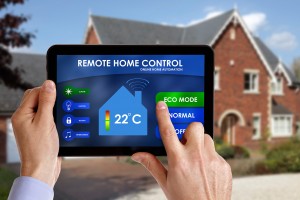 While smart home gadgets related to lighting and security are popular, those are only two of the many ways the Internet of Things can be used in smart homes.
While smart home gadgets related to lighting and security are popular, those are only two of the many ways the Internet of Things can be used in smart homes.
- Lighting: Automating lights in a home is a helpful way to save energy and keep your home safe. Homeowners can schedule their Philips Hue lightbulbs to wake them up in the morning, turn on intermittently while they’re on vacation, and dim during the day when natural light is abundant.
- Security and Access: Security concerns are a common reason homeowners look into smart home products. The Canary home security system’s video, motion, and audio sensors can monitor your home — and alert you through a device on your smartphone app when you’re away.
- HVAC: It can be difficult to maintain a consistently comfortable temperature in all rooms of a home, which is where the ecobee3 comes in. This smart thermostat uses remote sensors to measure the temperature in every room of a home — making sure you’re always comfortable.
- Entertainment: Entertainment-related IoT devices have changed the way people watch television. Chromecast connects users’ smartphones with their televisions to make streaming shows and movies easy, convenient, and personalized.
- Home Healthcare: From remote doctor’s appointments to wearables that monitor chronic health conditions, IoT devices for healthcare help people live more comfortable lives. Adamm helps people with asthma monitor their condition through a wearable smart device that tracks symptoms and sends a notification if they are abnormal.
- Smart Kitchen: Finding time to cook fresh meals each day can be difficult, which is why IoT devices in the kitchen are growing in popularity. The WeMo-enabled Crock-Pot allows cooks to remotely adjust the temperature and cook time — and ensure that dinner is ready when they arrive home.
Benefits of the Internet of Things
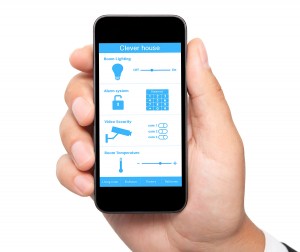 As the IoT can be used across all sectors — government, personal, business, and more — the benefits are wide-ranging. At home, consumers enjoy everything from saving money to adding convenience.
As the IoT can be used across all sectors — government, personal, business, and more — the benefits are wide-ranging. At home, consumers enjoy everything from saving money to adding convenience.
- Save Money: The IoT provides consumers with an opportunity to save energy and cut costs on their utility bills. In the long run, adding IoT devices to a home can also help provide a return on investment by increasing its value and making it easier to sell.
- Increase Safety: Smart devices can help protect families both young and old. Connected security systems can help younger families monitor their homes and keep kids safe. Similarly, the IoT can help older people live without assistance in their homes by providing features for safety and convenience.
- Prevent Damage: One of the primary benefits of IoT devices is that they can monitor your home while you are away. This can help homeowners feel more secure in knowing that even if a pipe breaks or the oven is left on, they will be notified and can quickly respond to the situation.
- Add Convenience: Convenience and a personalized living space are important. The IoT can remind homeowners when they are running low on household products, and a smart garage door can give homeowners peace of mind.
Concerns About the Internet of Things
Though there are many benefits to the IoT, consumers also have concerns about connecting so many smart devices to their lives.
- Privacy: Part of the reason the IoT serves consumers so well is because it tracks habits and interests to inform future decisions — whether to regulate household temperature or recommend television shows. However, many users remain concerned about what can be done with the data their IoT devices collect and whether or not their information is shared with third parties.
- Security: Though consumers enjoy the convenience of the IoT, they are not willing to sacrifice their security. The primary security risk is that hackers will be able to breach the Cloud services that manage customer data — which many have already done. It’s important for users to be aware which manufacturers have the highest security standards and which ones may be cutting corners.
- Interoperability: Another issue is interoperability. Consumers may face this challenge as they add more IoT devices to their smart homes — and a typical household is expected to contain more than 500 smart gadgets by 2022. Consumers desire a single hub where they can manage all of their devices. Manufacturers that focus on shared standards and integration will be the ones to capture consumer interest and loyalty.
Though consumers have concerns with the Internet of Things, the demand for smart home devices continues to grow. If someone you know is interested in purchasing IoT devices for their home, share this with them so they can learn more about the types of devices available and purchase from a security-minded manufacturer. A reliable and fast High-Speed Internet connection is highly recommended as you and your home become more connected through the Internet of Things. To ensure you have the right speeds or upgrade your current service call 855-640-4510 to see what CenturyLink offers in your area. See if you can consolidate some of your home services with a CenturyLink Internet bundle for even more savings!
Thanks to fiber-optic technology, the Internet keeps getting faster. Major Internet Service Providers (ISPs) now offer speeds of up to one gigabit per second — approximately 80 times faster than America’s average Internet speed. Though uses for such high speeds are limited now, they will grow as gigabit Internet becomes more widespread. However, there are at least ten ways we can put gig Internet to good use right away.
CenturyLink offers lots of different high-speed Internet options, including Fiber Internet in some neighborhoods. You can also take advantage of extra savings by opting for Internet and home service bundles. If you’ve been interested in gigabit speeds, take a look around to find out more.
1. Say Goodbye to Buffering
Nothing kills the excitement of a movie’s climax like having to pause it to buffer. With fiber Internet, you can stream video content with little to no delays. You can stream a full-length film in just eight seconds — versus 21 minutes with 10 Mbps Internet — and browse the web at the same time.
2. Enjoy Ultra HD Media

Gigabit Internet will enhance your television-binging and film-watching experience in more ways than one. Netflix offers Ultra HD quality picture, and the company recommends that customers have at least 25 Mbps Internet to enjoy this content. With 1 Gbps, you never have to worry about low-quality images or exceeding your bandwidth again. Find out if your devices are suitable, and expect more companies to join the Ultra HD club in the near future.
3. Actually See Your Family on Skype
Videoconferencing technology enables people to talk with friends, family, and business associates who are thousands of miles away — but not without technical difficulties. Anyone who has Skyped or FaceTimed over a low-speed Internet connection knows how frustrating it is when the conversation focuses on resolving connection problems. Gigabit Internet will make your video conferences crystal clear so you can spend more time talking about what matters.
4. Download Files Immediately
How does downloading an entire HD show in less than five seconds sound? That’s the reality of fiber-optic gigabit Internet, which lets you download files in an instant. You can download a five-minute song in 0.2 seconds, and a nine-hour audiobook in 0.9 seconds. Both your work and personal files can be at your fingertips immediately.
5. Send Files Quickly
Online content creators — like YouTubers and bloggers — can rejoice over the arrival of fiber-optic gig Internet and its super-fast upload speeds. America’s current average Internet speeds of 12.6 Mbps mean that some videos can take multiple hours to upload — a frustrating and unproductive use of time. Upgrading to gigabit Internet is a dream for those who want to share content in as close to real time as possible.
6. Participate in Livestreaming
Sites like YouNow and Periscope allow you to livestream yourself and your environment and are changing the world of content creation. With gigabit Internet, you can be a part of it, too. Whether you want to watch or create, gig Internet will give you the best livestreaming experience possible and won’t cause your videos to freeze or look grainy like most other connections will.
7. Take Your Gaming Experience to the Next Level

Video game graphics are always increasing in quality and complexity, so it makes sense to increase your Internet speed accordingly. There’s a reason South Korea is full of professional gamers — it’s home to the fastest ISPs on the planet. Gigabit Internet gives gamers a seamless experience and may also give you an advantage over other online players with slower connections.
8. Get Your Band Back Together
Online collaboration has assisted people in many industries for years, but slow videoconferencing connections make things like online band rehearsal and virtual recording sessions impractical for the average Internet user. Gigabit Internet means people can communicate in real time, expanding the ways you can collaborate without being in the same room — and without increasing production budgets.
9. Program Your Experience
Tech-savvy programmers are a group likely to benefit most from gigabit Internet. This fiber-optic high-speed Internet will allow developers to program more than just their applications or other projects. Instead, they’ll be able to change the framework of the network they work on to optimize it for them.
10. Innovate Our World
Some think that gigabit Internet is simply too fast for the average user’s needs and that the rest of the Internet needs to catch up before gig Internet can reach its full potential. However, when gigabit Internet enters a town, so do startup companies and innovative ideas. Faster Internet spurs inventions and advancement in numerous fields.
In 2013, Forbes claimed that gigabit Internet is essential to America’s global competitiveness. Now that it’s becoming a reality in the U.S., we have the chance to see what gigabit Internet can do. Chances are, we’ve just scratched the surface. Find out about Internet in your area, and don’t worry if it’s not there yet — like most advanced technologies, it won’t take long to be everywhere.



